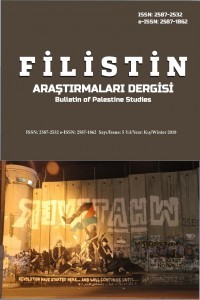Identity Stereotypes And Communal Identity: Representations of Jewish Immigrants to Palestine by 19th Century Hebrew Journalists
Identity Stereotypes And Communal Identity: Representations of Jewish Immigrants to Palestine by 19th Century Hebrew Journalists
Author(s): Gideon KoutsSubject(s): Jewish studies, Ethnohistory, History of Judaism, Politics and religion, 19th Century, Politics and Identity, Identity of Collectives
Published by: Muhammed Mustafa KULU
Keywords: Ashkenazim; Sephardim; Palestine; 19th century; Stereotypes; Communal identity; Representations;
Summary/Abstract: Tensions between the Jewish communities, particularly in the context of the division between “Ashkenazim” and “Sephardim” produce reciprocal images, which, according to social psychologists, create stereotypes that ”attach” some characteristics to this or that community. Stereotypes can also have a function in the formation and transformation of cultural identities, including in their historical concept, as diagnosed by cultural studies scholars. The claim regarding discrimination against oriental communities in shaping the cultural identity of the State of Israel is well known. It could be assumed that the phenomenon, as known to us in its present dimensions, is as old as the State of Israel. However, the previous waves of immigration as well created a situation of Communal Identification. Texts and reports from the years 1878- 1884 written by notable Hebrew journalists of the time, demonstrate that the attempt to identify “Ashkenazi characteristics” and “Sephardi characteristics” was already obvious in 19th century Palestine. We make use of texts by Yehiel Bril, founder and editor of the first Hebrew newspaper in Palestine, The Lebanon (1863) and Eliezer Ben Yehuda, founder of the Modern Hebrew press in Palestine since 1884. In 1878, Bril wrote a text as a letter to a friend, analyzing “communal problems” of Jerusalem. In this text and another one written three years later, the observations of Bril, are more sympathetic to the Sephardim, although he also knows how to qualify his praise. In 1883, Bril visited Palestine again and found new comparisons of Sephardic and Ashkenazi characteristics. During the visit of Bril in Palestine, another top Hebrew journalist was already there. The newcomer, Eliezer Ben-Yehuda, the renovator of Hebrew language, created his own press “Empire” in Jerusalem. Ben-Yehuda, native of Russia, expressed already its preference to Sephardic pronunciation of Hebrew language, but in his writings, he enlarges the “Sephardic superiority” (however, mixed with “orientalist” approach) also to other stereotypical personal and social characteristics. It appears that communal tensions existed already in the 19th century. The stereotypes existed, although their contents were not always similar to those of today. However, the communal identity was supposed to merge into a national identity. Nevertheless, identity, as Habermas urges, “is not something given, but also, and simultaneously, our own project”. There is apparently no clear agreement on such a project, even in Israel and the Jewish World of our days.
Journal: FİLİSTİN ARAŞTIRMALARI DERGİSİ
- Issue Year: 2019
- Issue No: 5
- Page Range: 1-14
- Page Count: 14
- Language: English

